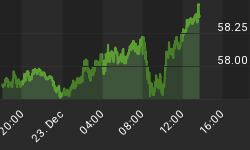We are participating in a PIMCO conference call this morning with Mohamed A. El-Erian and Bill Gross. PIMCO is very well connected and knowledgeable regarding the bond markets. We may be able to gain some insight into the debt problems in Europe and the United States. Serious debt problems remain and the solutions are not going to be easy since haircuts and negative impacts will be involved.
We recently outlined some bearish concerns in Parallels To 2000 And 2008 Should Not Be Ignored. It is very important to understand that even if we have already entered a bear market:
- We may not know it for several months.
- Stocks could rally back toward 1,260.
- A move to 1,260 represents a gain of 7.5%.
- A break above 1,260 could reinvigorate the bull market.
How the market behaves near 1,260 (if we get there) will be very telling. The chart below shows the S&P 500's next major hurdle sits near 1,200. A break above 1,200 could lead to a swift move toward the bottom of the head-and-shoulders neckline (labeled A). Other bull market tests take the form of the now downward-sloping 200-day moving average (labeled C) and the downward-sloping trendline (labeled B). The point is we will know much more about the risk-reward profile of stocks and commodities based on how the S&P 500 fares at the three points of possible resistance (A, B, and C).

If the S&P 500 fails below A, B, and C above, then we would most likely sell a good portion of our remaining exposure to stocks. Another option would be to hedge our current positions near A, B, and C. A hedge could take the form of a vehicle like the ETF SH, which goes up when the S&P 500 goes down.
A very similar bear market rally occurred in 2000. The chart below shows a drop similar to the recent waterfall decline in stocks. Notice, like today, the 200-day moving average had already turned down in 2000 (see red arrow near C), which leaned bearish.

In 2000, stocks rallied hard back toward the previous trendline, which is labeled B below. The 200-day continued to roll over (near D), which meant the odds of the rally failing were much higher than under typical bull market conditions.

After the sharp rally where it was declared "we have found a bottom", stocks reversed near the intersection of the 200-day and the blue trendline B (near point C and red arrow). If the present day rally approaches similar obstacles (200-day and trendline/neckline), it will be a very big test for the sustainability of the bull market. If the 200-day is noticeably sloping downward as stocks approach it, we will be skeptical, but open to, a bullish resolution.

The scenario above is one of many possible scenarios that could play out, but it suggests that having a mixed approach with some stocks, some cash, and precious metals is appropriate until we get some more clarity regarding the issues above. If stocks make a lower low, rather than rallying, we will look for bullish divergences on the way back down. If they exist, we will be patient. If they do not, we will continue to cut back on our exposure to risk.
We did a study this week looking for high probability ETFs relative to a possible move back toward 1,260; more information, including some ETF symbols, can be found in the Twitter post "ETF Screen for Possible S&P 500 Neckline Rally". Some other important levels to watch on any rally attempt are shown below.

















